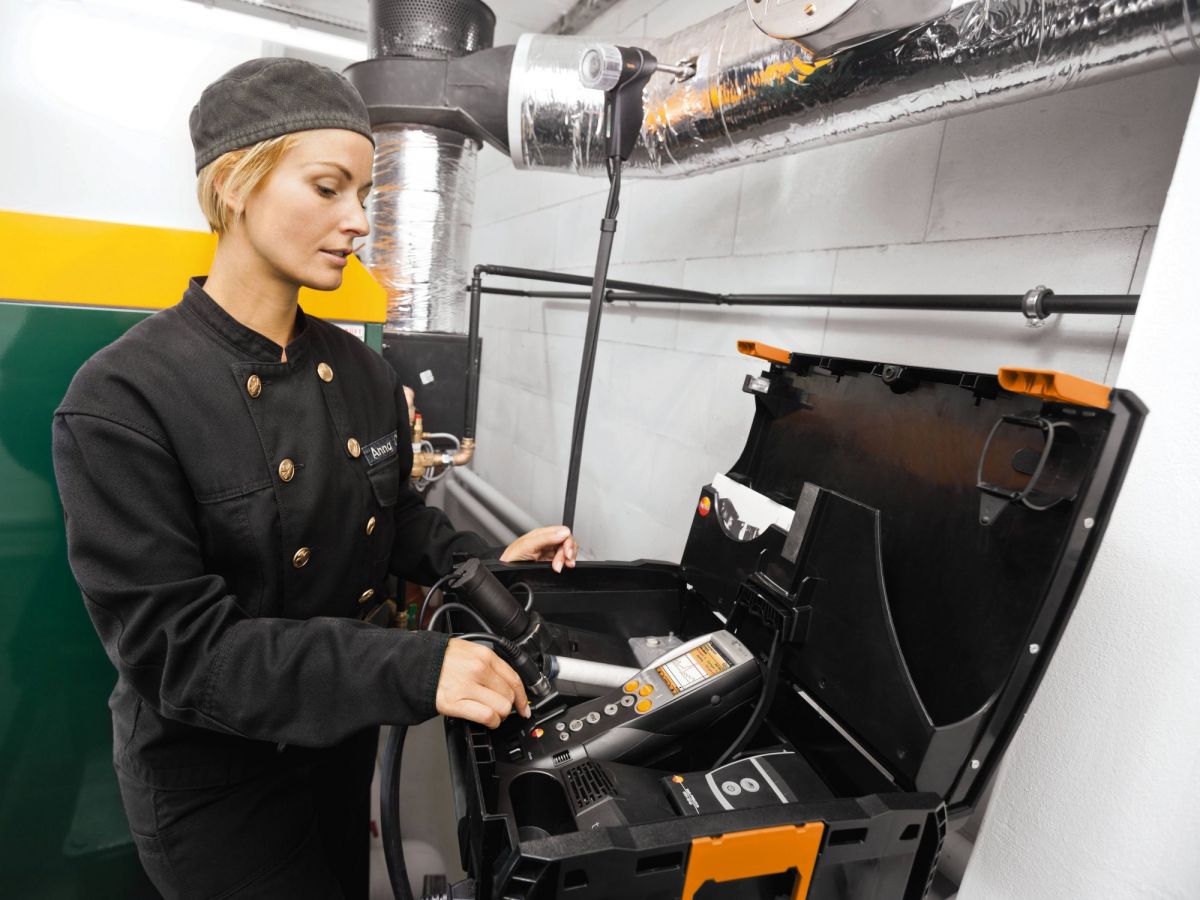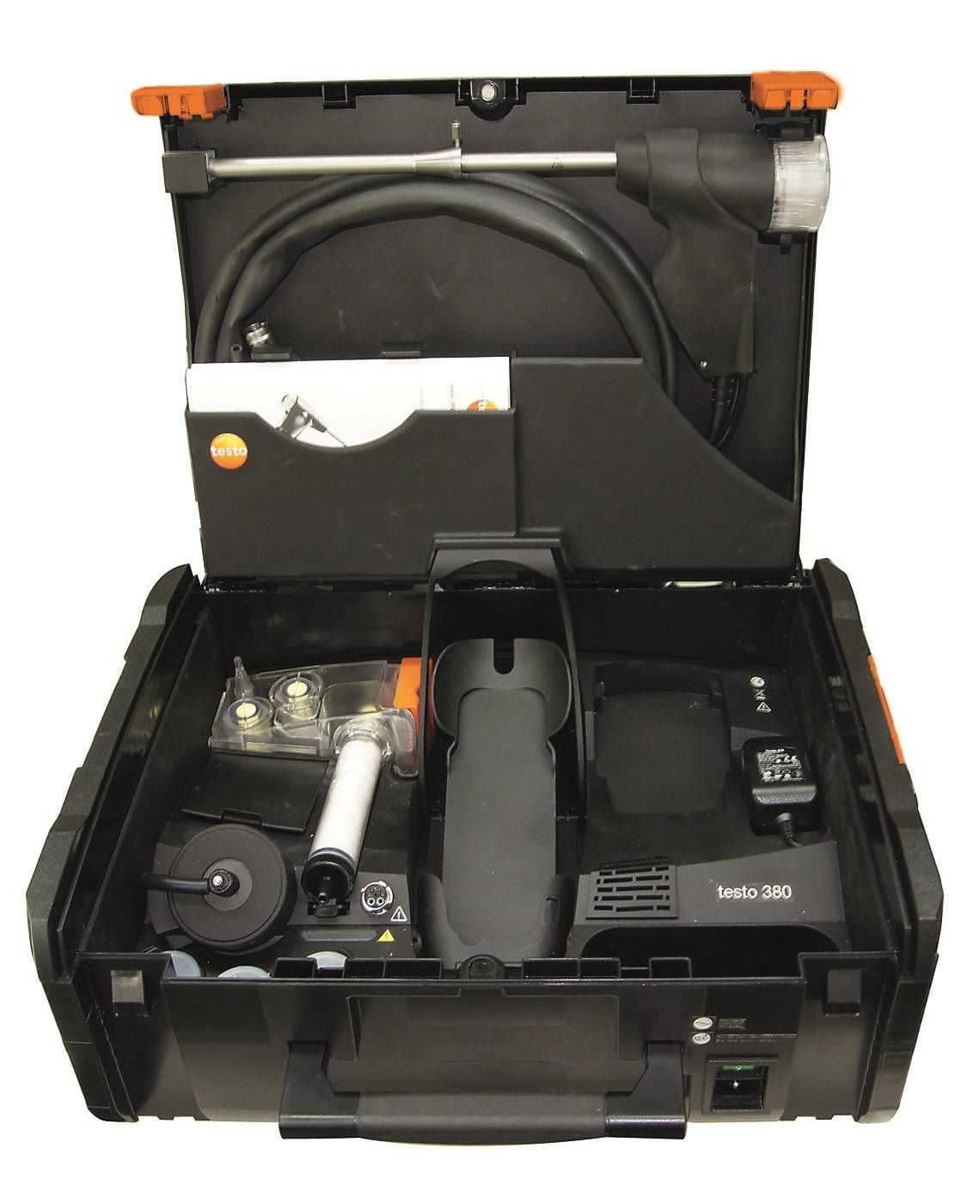| 货号: | 0632 3800 |
| 品牌: | 德图(testo) |
| 产地: | 德国 |
| 仪器类型: | 便携式烟气分析仪 |
产品特点:
·同时测量细颗粒物、O2、CO
·实时图形显示测量值
·实时测量,监测颗粒物,通过TüV测试
·手持轻便,运输安全
与烟气分析仪结合使用,适用于固体燃料或油、气等燃烧系统;实时测量,监测颗粒物;通过TUV测试;同时测量细颗粒物、O2和CO;实时图形显示测量值;操作和维护经济;手持轻便,运输安全;仅用同一根探头可测得所有参数。
产品描述:
与烟气分析仪结合使用,适用于固体燃料或油、气等燃烧系统;实时测量,监测颗粒物;通过TUV测试;同时测量细颗粒物、O2和CO;实时图形显示测量值;操作和维护经济;手持轻便,运输安全;仅用同一根探头可测得所有参数。
细颗粒物探头
Testo开发的手持式细颗粒物探头,涵盖了您在进行专业性的细颗粒物测量作业时所需要的一切。探头从烟囱中取样原始烟气,并输送至烟气分析仪进行烟气分析,同时稀释器将新鲜空气和原始烟气混合用于细颗粒物测量。探头也可用于测量烟气温度和烟道抽力。探头装有伴热模块,加热温度为120℃,可有效避免烟气中水汽在采样探头内冷凝。探头可以被轻松地放置在仪器箱内或者从中取出。
旋转稀释器
为了实现细颗粒物测量,原始气体经过采样管后进入工业陶瓷制成的旋转稀释器。细颗粒物浓度被引入的定量新鲜空气稀释,即可减少对气路和测量系统的污染程度,同时测得细颗粒物浓度。整个测量系统的运行状态会非常稳定。稀释器在长时间使用后,只需使用棉签棉签清洁即可。
细颗粒物传感器
细颗粒物传感器用于测量气体中的颗粒物的量。气体经过喷嘴撞击在震荡的细颗粒物传感器上,振动频率随着沉积的粒子量的变化而变化,由此粒子数量被确定下来,而整个运算过程瞬间完成,所以在整个测量过程中颗粒物浓度值都是实时的测量值。如此,供热锅炉系统任何变化都会及时被反应出来,能够被生产人员迅速有效地调整。
·测量系统箱:整个测量系统集成于系统箱内,重量约为7.9kg,便于外出测量作业时携带或运输。
·冷凝槽和过滤器:冷凝槽和过滤器分别用于冷却除水和过滤粉尘,原始烟气经过冷凝槽和过滤器后进入烟气分析仪。
·预加热单元:保持烟气温度,确保细颗粒物测量值。
技术数据:
| 技术参数 | |
|---|---|
| 精度 | acc. VDI 4206-2 |
| 分辨力 | 0.1 mg/m3 (>5mg/m3) |
| 直径 | 475 x 360 x 190 mm |
| 操作温度 | +5 ~ +40 ℃ |
| 防护等级 | IP40 |
| 显示屏类型 | LCD |
| 显示屏特性 | shows warm-up phase and operational readiness |
| 电源 | via internal mains unit: 100 V AC/0.45 A to 240 V AC/0.2 A (50 to 60 Hz) |
| 最大内存 | 500.000 readings |
| 存放温度 | -20 ~ +50 ℃ |
| 重量 | 7900 g |
| 测量范围 | 0 ~ 300 mg/m3 |
应用故事:
Whether flue gas inspector/chimney sweep, service engineer or heating engineer: testo 380 is the ideal aid.If particulate matter measurement has never presented any difficulty - it won't take long to learn how this works: the particulate matter measurement system will guide you through the measurement, analyse the relevant particulate matter, O2 and CO values in parallel, and illustrate these in a diagram. Regardless of whether you are carrying out an acceptance test, or would like to set a combustion system to best effect: with the particulate matter analyzer testo 380, the new challenges of particulate matter measurement can be faced with confidence.
Thanks to testo 380, the legal guidelines and regulations regarding the acceptance testing process are easily met: the acceptance test integrated into the measurement menu follows the official process set out by the first German Emission Control Ordinance (BImSchV). The intuitive menu guidance ensures that none of the stipulated steps are missed out: core flow and draught measurement are already integrated into the measurement process; important work stages are constantly prompted.
Your challenging task as a service engineer and tradesman in the areas of heating and sanitary facilities is to set solid fuel systems on site to perform efficiently and meet the new limit values. The measurement program “setting assistant” is an excellent aid: it allows you to carry out measurement procedures with ease; in fact, the testo 380 can perform several measuring cycles in a row without any difficulty.


